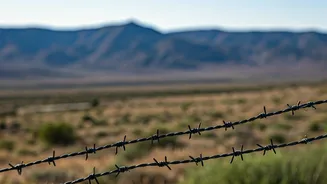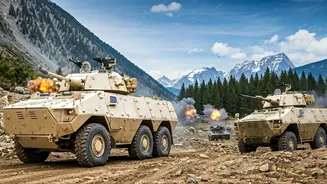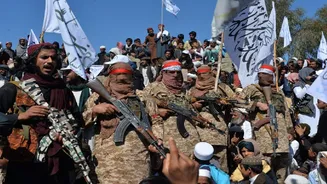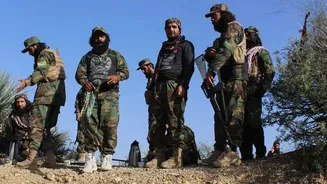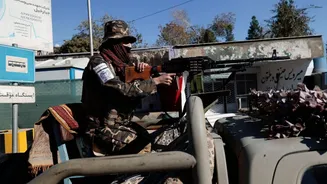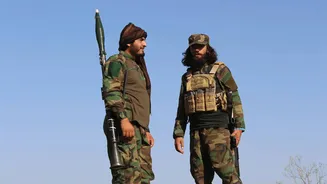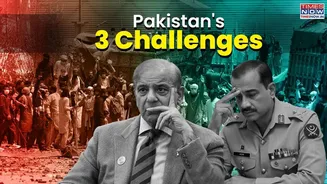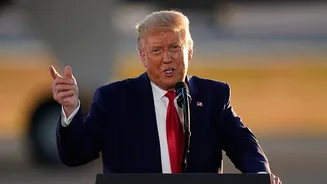The Background to Conflict
The relationship between Pakistan and Afghanistan has long been turbulent, marked by border disputes, cross-border attacks, and accusations of harboring
militants. The porous border, known as the Durand Line, has been a major source of contention. Afghanistan has never fully recognized the border, which was established in 1893 by the British. This has fueled instability and distrust, creating a climate in which militant groups can flourish. The rise of the Taliban in Afghanistan further complicated matters, with Pakistan accused of supporting the group, a charge Pakistan denies, yet the situation on the ground reflects otherwise. The conflict, which has been ongoing for decades, has resulted in significant casualties and displacement, affecting civilians on both sides of the border. Various attempts to mediate and negotiate a peaceful resolution have been met with limited success. The historical context has resulted in a deeply rooted sense of animosity and mutual suspicion.
The Ceasefire's Genesis
The recent ceasefire did not come about from a single event, but from a complex web of factors. The specifics, although unconfirmed, point towards internal and external pressures. Both countries were facing considerable diplomatic pressure from international entities to de-escalate the conflict. The financial implications of the ongoing conflict, particularly the economic strain on both nations, played a role. It is speculated that back-channel diplomacy, mediated by regional powers, was critical in paving the path toward the truce. The exact details of the negotiations remain unclear, highlighting the secretive nature of such agreements. The swift shift from armed conflict to a temporary cessation of hostilities underscores the urgent need for the involved parties to come to terms with the crisis. The initial success of the ceasefire depended on the willingness of both sides to lay down their weapons and embrace a brief period of peace.
Key Actors Involved
Pinpointing the exact instigators of the ceasefire is difficult, though some main actors are more relevant than others. The governments of both Afghanistan and Pakistan were the most obvious parties to the agreement, each seeking to safeguard their own interests. Regional players, such as China and Iran, were seen as influencing the parties, with their own diplomatic strategies that facilitated talks between the two countries. Various international organizations, including the United Nations, also played a role. Their advocacy for peace and stability in the region helped to create an atmosphere conducive to negotiations. Understanding these entities and their motivations is vital to comprehending the circumstances which brought about the ceasefire. The degree to which any of these players can keep the truce sustainable will be the key to its success.
Challenges to Peace
Several significant challenges threaten the long-term viability of the ceasefire. The presence of militant groups along the border poses a constant threat. These groups often operate independently of the governments and have a vested interest in perpetuating instability. The underlying issues that led to the conflict, such as border disputes and historical grievances, have not been resolved. Until these issues are addressed, the risk of renewed hostilities remains. The lack of trust between both parties is another considerable hurdle. Years of conflict and mistrust have eroded confidence in each other's promises. Economic issues may have also affected the ceasefire, and can be easily impacted, adding to the challenge. Sustaining this truce will require constant efforts, and both sides have to commit to resolving these challenges.
Prospects for Duration
The future of the ceasefire is far from certain, contingent on a number of complex factors. The commitment of both governments to the terms of the agreement is fundamental. Any violation could quickly shatter the fragile peace. The involvement of international organizations in monitoring and mediation may provide support. These bodies can play an important role in ensuring that the terms of the ceasefire are upheld and that any disputes are resolved peacefully. Sustaining the truce will require persistent diplomacy and a willingness to make compromises. The challenges are great, but the rewards—peace, stability, and economic growth—make it an endeavor worth pursuing. If all the elements of the ceasefire are handled properly and a genuine effort is made by all parties, there is a good chance that the truce could pave the way for a lasting peace.


